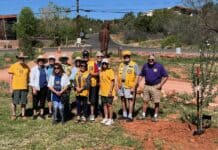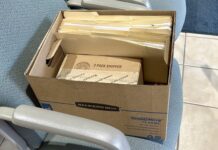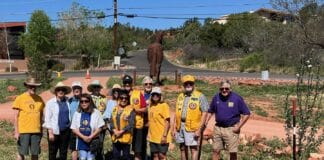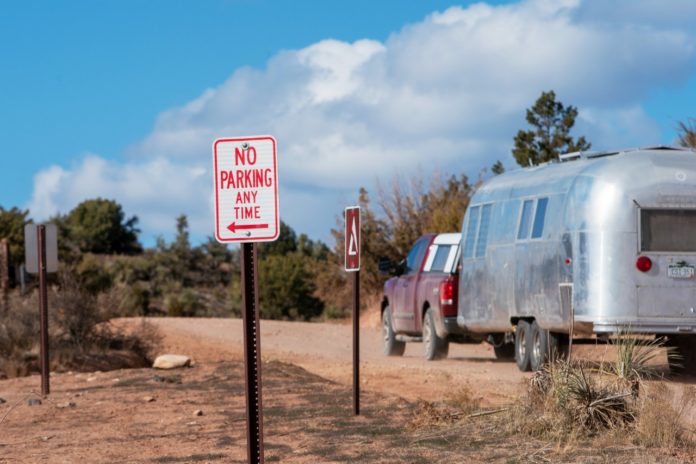
They came in vans: Conversion vans and Sprinter vans, Westphalias and Econolines. They came in RVs and “schoolies,” in cars pulling tear drops and pop ups.
The full spectrum of camping vehicles — from high end to low — made an appearance as thousands seeking social distance and comfort in 2020 and 2021 came to camp in the Verde Valley.
“In the pandemic, it was the place that people felt safe,” Amy Tinderholt, district ranger for the Red Rock Ranger District, said of local public lands.
In addition to the COVID-19 health crisis, historic wildfires and smoke closed national forests and choked big cities on the West Coast in late summer and fall, spurring another wave of motorized nomads to Northern Arizona.
Historic job losses in a pandemic economy and chronic affordable housing issues in the Verde Valley and beyond may have also driven people experiencing housing crisis onto the land in larger-than-usual numbers.
During a year when outdoor recreation surged all across the country, guides, residents and other Sedona-lovers became especially concerned about use impacts in the foothills of the Red Rock-Secret Mountain Wilderness west of the city, where locals saw new clearings and roads appearing at an alarming rate.
Now, Tinderholt said the USFS is studying alternatives to the current off-road travel and camping rules along Forest Road 525 and other western foothill roads where motorized dispersed camping, or “boondocking” in RV lingo, is currently allowed.
“It’s very easy for us to have vegetation loss and soil degradation when we have travel off roads, and we’re certainly seeing that in that area. Where we intend to start is to look at how we manage some of that off-road travel and some of the off-road camping,” Tinderholt said.
According to current camping rules along parts of FR 525, campers are allowed to drive and park anywhere within 300 feet of the road in some areas, 30 feet in others.
USFS recreation personnel worked hard to limit damage as the pandemic — and West Coast fires — wore on. Rangers added signs to educate campers, including a large electric sign at the beginning of FR 525. Staff fought to contain the growth of clearings by placing boulders at their edges, creating what workers called “blobs.”
But the volume of campers tested the limits of the agency’s resources and the current rules. With vehicles allowed to drive up to 300 feet off the road, some of the destructive activity was technically legal under current rules, Tinderholt said.
“I think it’s safe to say we’re not starting at a place where [we believe] our current rules in those areas … are serving the resource well,” Tinderholt said.
Tinderholt said a spectrum of options will be considered, ranging from just small changes to a larger overhaul of the rules, such as creating designated camping areas in the 525 corridor.
Implementing an official change to dispersed camping rules for FR 525 and nearby areas would likely take a couple of years, Tinderholt said, and may require an environmental impact study under the National Environmental Policy Act. Whether a NEPA study is required or not, the public will be involved in the process, she said.
“I think the first part of it would be for us to create an initial proposed action to get some public input to understand … what the level of public buy-in to a change like this would be, or what other ideas are out there,” Tinderholt said.
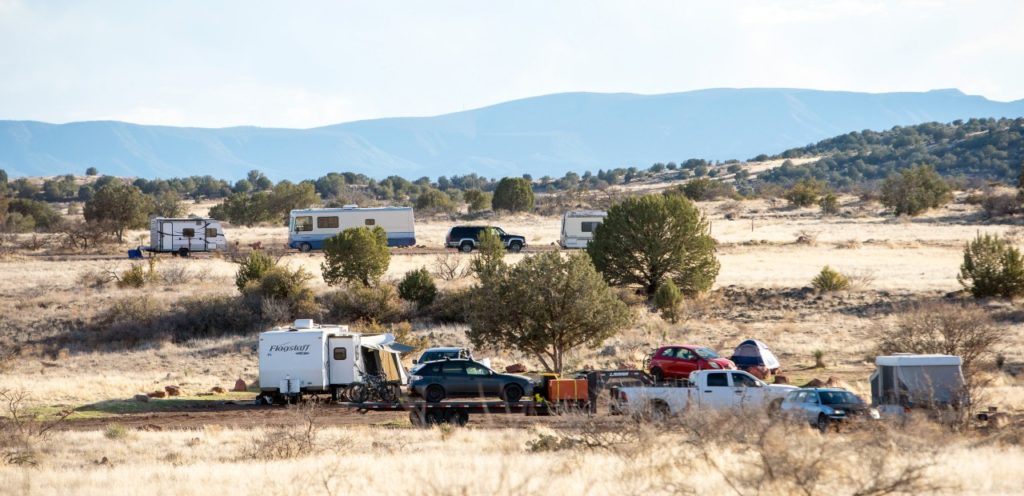
‘Squeezing the Toothpaste’
Many who frequent the western foothills told the Sedona Red Rock News that a change in rules for FR 525 is needed, but some visitors would likely be disappointed to see boondocking in the area go away, or be significantly restricted. Dispersed camping is free, and it offers a sense of being away from civilization.
And changes to camping rules in one area can push usage to other areas, as USFS personnel understand — a phenomenon called “squeezing the toothpaste” by a previous district ranger.
Over the last three decades, the Red Rock Ranger District has slowly squeezed the tube on camping outside Sedona with 10 forest orders closing different parts of the district to camping. That’s just the Red Rock Ranger District. Prescott National Forest closures also squeeze the toothpaste, and in January, the PNF renewed a two-year camping closure first imposed in January 2019 on a huge swath of USFS land south and west of State Route 260 from Cottonwood to Camp Verde.
Tom Palmer, recreation program manager for Prescott National Forest, said the PNF camping closure was ordered in 2019 to stop damage from intensive camping, including residential usage — people living on the forest — while the forest developed a plan for managing camping in the area. The closure was renewed this year, he said, because the project was delayed by COVID-19.
Dustin Ross, a rancher based of FR 525, said that he noticed a bump in camping off FR 525 when the Prescott National Forest closure occurred — a side effect anticipated by officials in both forests, who discussed it ahead of time.
“We knew that was going to happen to some degree,” Palmer said.
As the USFS develops options for managing camping west of Sedona, it will have to consider the side effects of reducing the available camping in the area, if that emerges as an option.
Addressing the lack of affordable housing or shelter services for unhoused people in the Verde Valley may also alleviate camping pressure on the public lands west of Sedona.
Sedona currently does not have any overnight shelters, and the city enforces a camping ban within city limits. Cottonwood has a small number of beds for emergency shelter.
Long-term camping in the national forests is not allowed under current rules, which limit stays to 14 days within a 30-day period.
But it’s likely that not everyone violating residential rules is experiencing a housing crisis. Ross said that residents of the area see familiar faces vacationing on the forest in deluxe campers for a season year after year.
Overstaying the 14-day limit has been enough of a problem in the Red Rock Ranger District that the USFS developed an app last year to aid in enforcing the rules. The experimental app allows forest staff to more easily document how long vehicles have been on the national forest, so forest personnel have the documentation needed to enforce the 14-day limit




